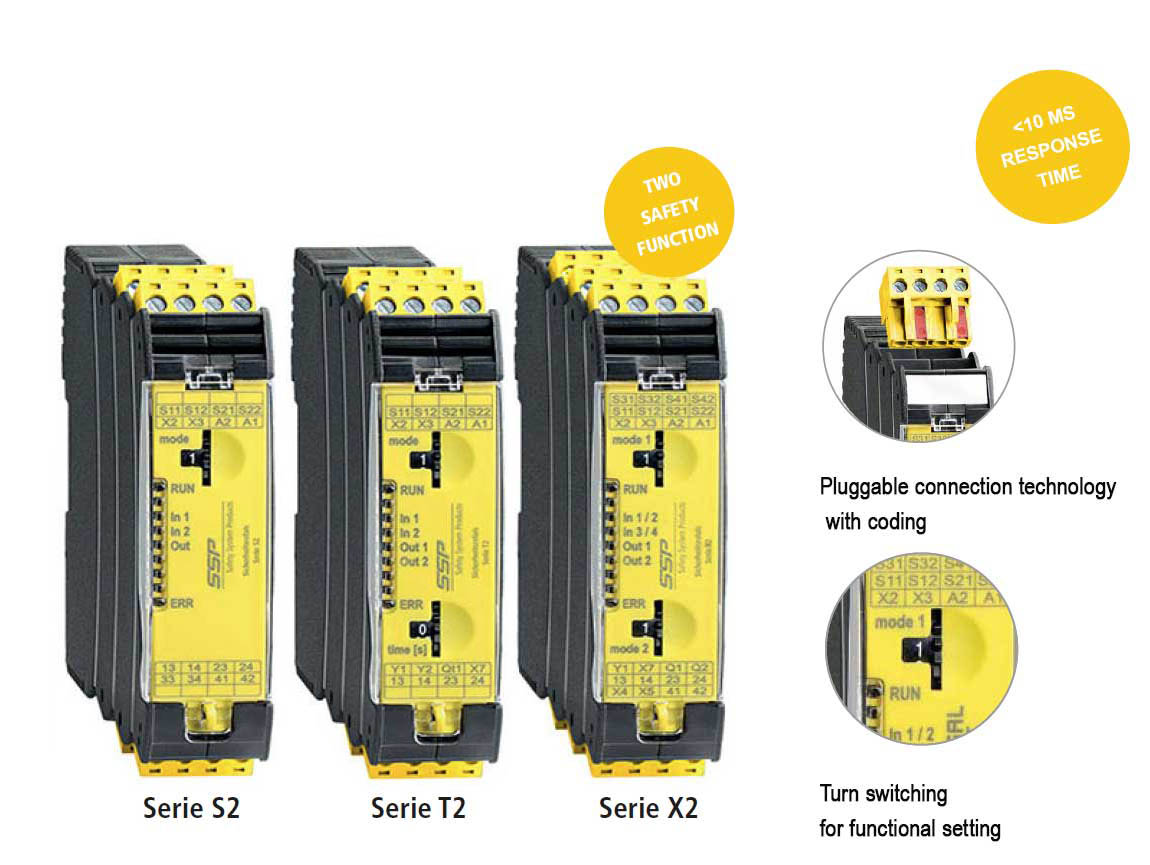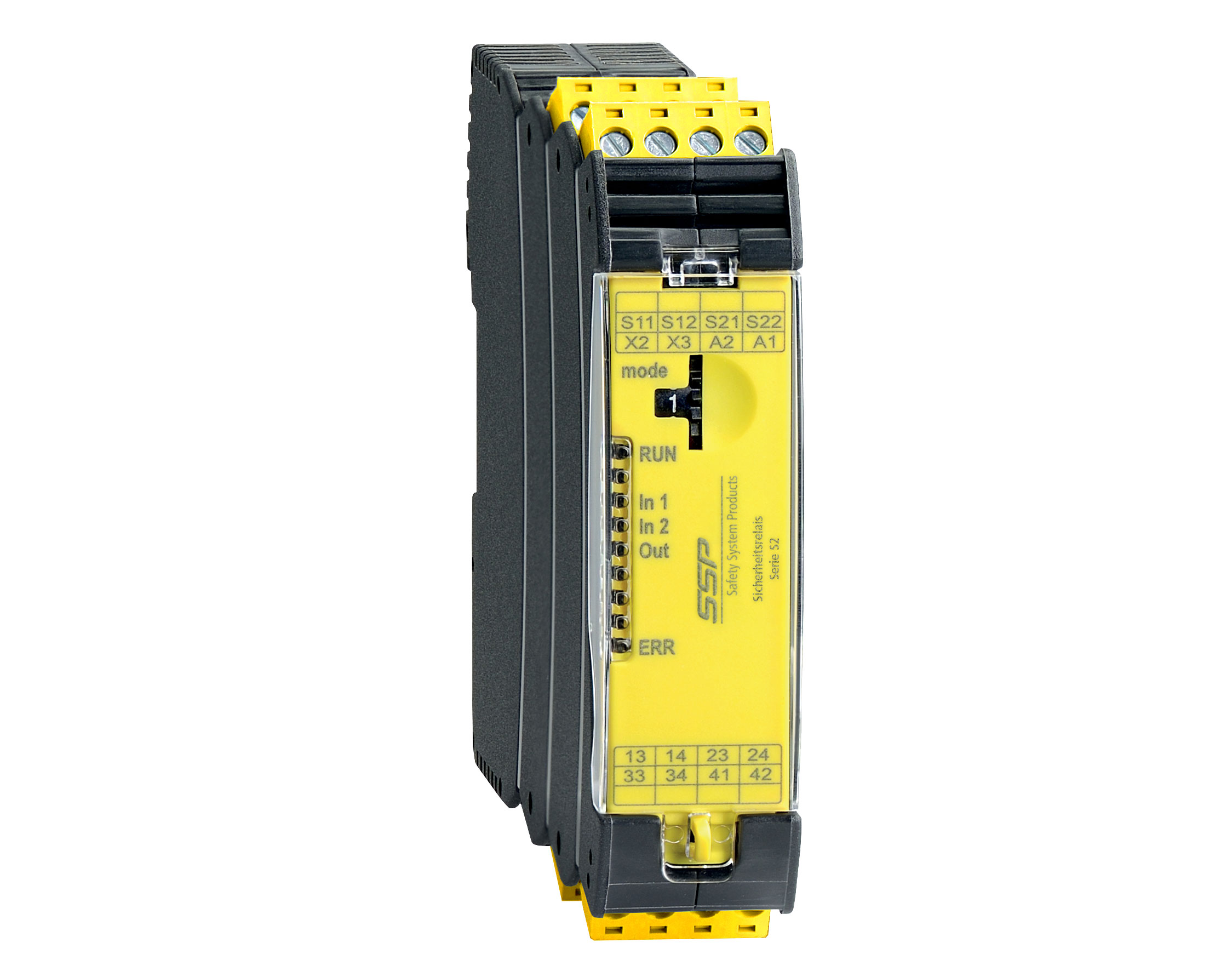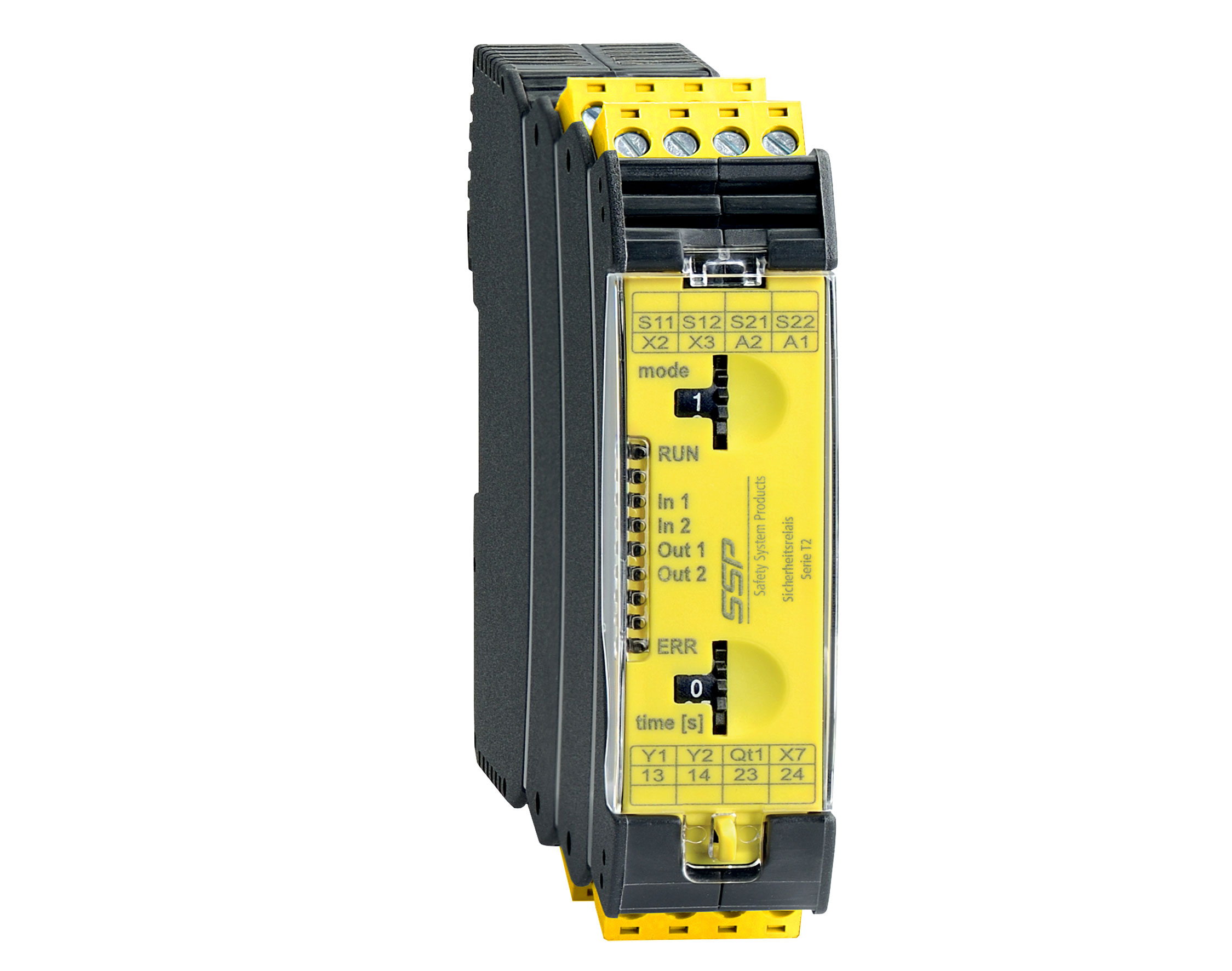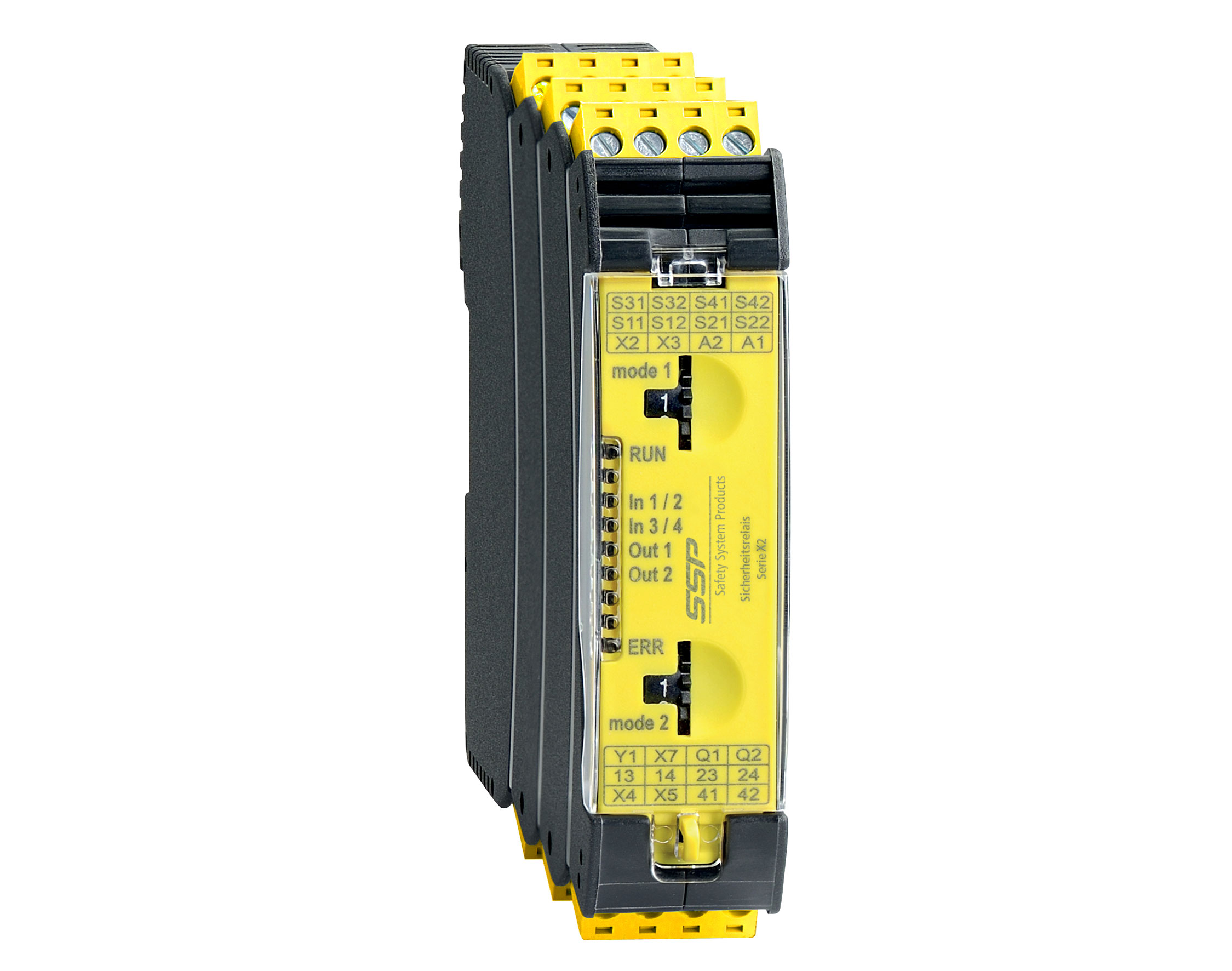Safety relays
SSP safety relais
Universal safety relais for different application areas

User-friendly
- Up to 16 different applications selectable
- Monitoring of all common safety sensors
- Achievable safety level up to PL e / SIL 3
- Easy adjustment with rotary switch
- Selected application can be secured with a seal
- Short response times (< 10 ms) on request
- High switching capacities and short cycle times
- Pluggable connection technology with coding
- Two safety functions in one safety relay (X2 series)
Flexible in application
- One of the two-channel monitoring of sensors
- Manual or automatic reset
- Monitoring of potential-free signals
- Stop category 0 and 1
- Monitoring of OSSD signals
- Use as contact extension or as a full safety relay
Connection options
- Safety light curtains
- Solenoid interlocks
- Secure process payment
- safe non-contact sensors
- Two-hand function (X2 series)
Universal safety relays for various applications
The T series device presents you with the option of single or dual channel connection of sensors, with mechanical outputs. Additionally, this device includes a release-delayed output.







